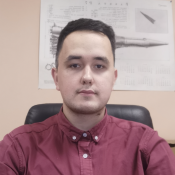Acoustic seminar | 19 January 2024
Rector's Hall at Birzhevaya st., 4 + online

The application of ultrasonic testing in non-destructive evaluation plays a pivotal role in assessing material integrity across various industries. With the ever-increasing demand for precision and efficiency in flaw detection, computer modeling has emerged as an invaluable tool for advancing ultrasonic testing methodologies. Currently, various industries are increasingly using materials whose defectiveness criteria are difficult to determine, and the nature of the propagation of ultrasonic waves is difficult to predict. This report will discuss several complex cases of ultrasonic testing, methods for simulating them using Comsol Multiphysics software will be described, as well as the application of the information obtained from the models in real-life cases.
In this work, we aim to establish the theoretical framework essential for evolving computer models of ultrasonic testing. This exploration will encompass an assessment of the capabilities and limitations of software pertinent to the subject matter, with a specific focus on the challenges related to modeling acoustically anisotropic materials.
Furthermore, the discussion will extend to the utilization of ultrasonic testing in carbon-carbon and carbon-ceramic composite materials, materials derived from additive technologies, and the detection of minuscule soldering defects. The contemplated ultrasonic testing methods will encompass pulse-echo, transmission and echo-transmission techniques, as well as the application of phased arrays, including the analysis of full focused phased arrays.
This report aims to provide a cohesive understanding of the theoretical underpinnings critical to the development of computer models for ultrasonic testing applications, providing perspective on their practical implications.
Last news
-
-
Scientific Show, Lectures, and Lab Tours: Recap of Physics Day 2025 at ITMO
-
ITMO-Developed Metasurface Makes Optical Chips 2x More Efficient
-
“Combing” Light: ITMO Researchers Find Reliable and Fast Way to Transmit Data in Space
-
ITMO Researchers Produce Artificial Optical Synapse for Enhanced AI Performance
